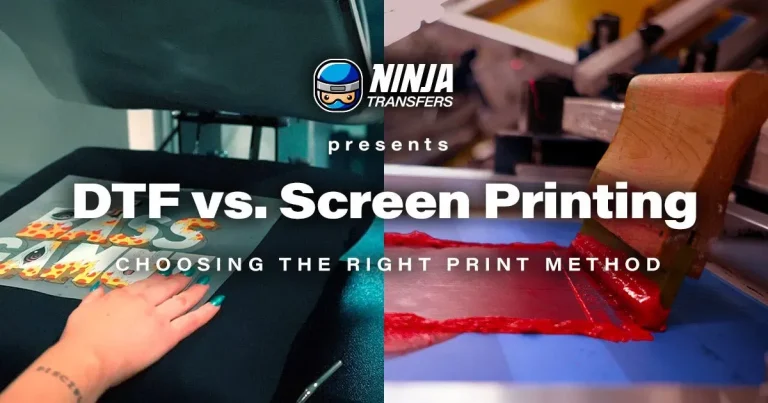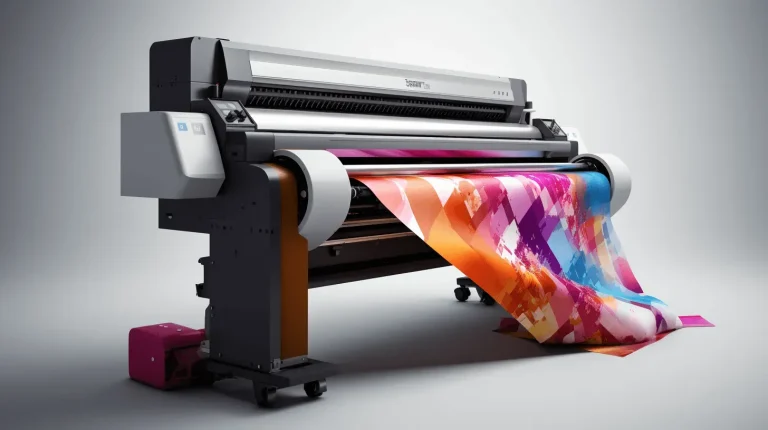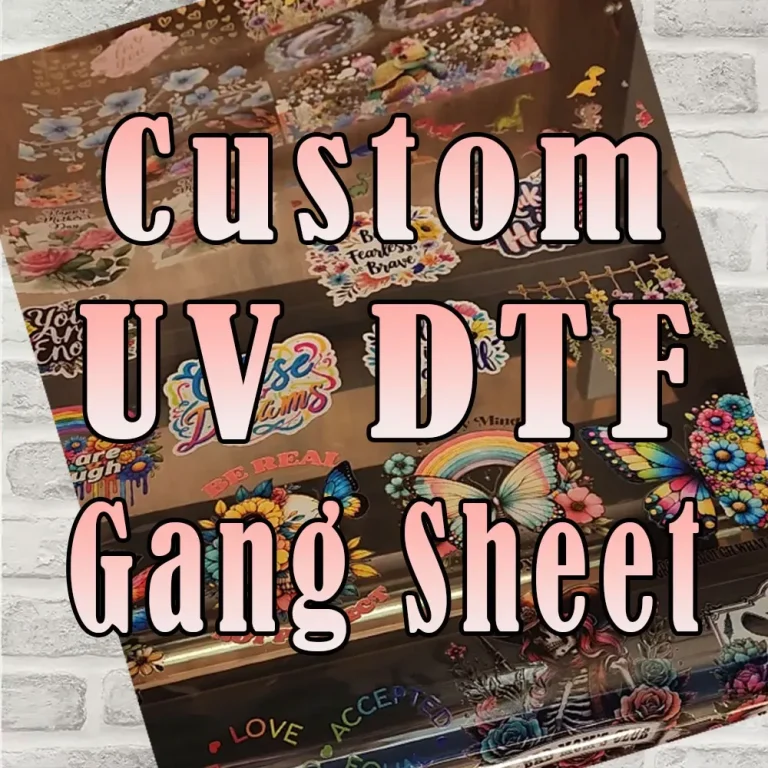DTF Transfers: A Step-by-Step Guide to Stunning Designs
**DTF transfers**, or Direct to Film transfers, are quickly becoming a popular choice for those looking to create stunning fabric designs with ease. This innovative printing technique combines vibrant colors with exceptional versatility, making it an ideal solution for designers and small business owners alike. In this comprehensive guide, we will delve into the world of DTF transfers, offering insights on how to create DTF transfers that stand out. Whether you are a seasoned professional or a beginner ready to explore the DTF transfer tutorial, you’ll find valuable tips and techniques to enhance your fabric printing experience. Empower your creativity and learn the essential DTF printing techniques that will help your designs shine!
Exploring the exciting realm of **Direct to Film transfers** opens up new avenues for fabric decoration and design. Known as a cutting-edge method in the printing industry, DTF technology is lauded for its ability to produce vibrant and intricate designs effortlessly. Alternative terms such as transfer printing, film-based printing, and garment decoration encapsulate the essence of this versatile approach, appealing to a wide audience from fashion enthusiasts to entrepreneurs. As we delve deeper, you will uncover various strategies on how to effectively create these transfers and transform your fabric projects into eye-catching masterpieces. Join us as we embark on this journey through DTF printing techniques that unlock unprecedented creative possibilities.
Understanding DTF Transfers: A New Era in Fabric Printing
Direct to Film (DTF) transfers have swiftly become a game changer in the fabric printing industry. Unlike traditional methods such as screen printing or heat transfer vinyl, DTF utilizes a unique process where designs are printed on a specialized film and then transferred onto various fabric types. This method offers unparalleled versatility, allowing designers to tackle intricate patterns with vibrant colors, making it ideal for both business applications and personal projects.
The appeal of DTF transfers lies in their simplicity and effectiveness. Users can easily create high-quality designs without the need for complex workarounds. Additionally, DTF maintains color richness and durability, which is particularly advantageous for garments that require frequent washing. As more entrepreneurs and hobbyists venture into custom apparel production, understanding DTF transfers becomes essential for producing stunning fabric designs.
Materials Required for Crafting DTF Transfers
To produce high-quality DTF transfers, it’s vital to gather the right materials. First and foremost, you’ll need a DTF printer specifically engineered for this printing technique. This type of printer is pivotal for ensuring that your prints have vibrant colors and sharp details, which are crucial for creating eye-catching designs that stand out on fabric.
Apart from the printer, DTF transfer film, DTF inks, and a reliable heat press are necessary. The transfer film allows for the adhesion of the inks to the fabric during the heat transfer process. Using specialized DTF inks is also important, as they contribute significantly to the longevity of the designs, ensuring that they maintain their color even after numerous washes.
Designing Your Artwork for DTF Printing: Key Considerations
When embarking on your DTF transfer journey, the design phase is where your creativity truly shines. Using advanced graphic design software like Adobe Illustrator or CorelDRAW is beneficial for producing detailed and vibrant designs. Both programs provide a range of tools that cater to professional and novice designers alike, making them suitable choices for creating stunning fabric visuals.
Setting up your artwork correctly is essential for achieving the best results. Ensure that the dimensions and resolution reflect the fabric product being used, ideally with a resolution of 300 DPI. Selecting the right colors is equally important; sticking to the CMYK color model will help ensure that the colors printed match what you see on the screen, allowing for more accurate and appealing designs.
The Printing Process: Making Your DTF Transfers Come to Life
Once your design is finalized, the next crucial step is printing your DTF transfers. Setting up your DTF printer involves adjusting the print settings to accommodate your chosen transfer film. It’s advisable to opt for high-quality print modes to enhance the vibrancy and detail of your final designs. Paying meticulous attention to this stage ensures you get the most out of your DTF transfer production.
The actual printing process must take place in a clean, dust-free environment to prevent any contamination that could affect the quality of your designs. After printing, allowing the ink to cure properly is essential. Some printers benefit from using curing powders to secure the ink and enhance adhesion when the transfer process is executed.
Applying DTF Transfers: Techniques for a Flawless Finish
Transferring your DTF design onto fabric is where all your preparatory work comes into play. Before starting, preheating your heat press to the correct temperature tailored for your specific fabric is crucial. Properly positioning your transfer film on the fabric ensures accuracy and prevents errors during the application, which can lead to unsatisfactory results.
Using heat and pressure accurately is key to achieving a successful transfer. The recommended temperature is typically around 305°F for approximately 15 seconds, but always refer to the manufacturer’s guidelines for best practices. Allowing the transfer to cool down before peeling the film off is essential, ensuring a smooth finish and proper adherence of the design to the fabric.
Best Practices and Care Tips for Long-Lasting DTF Transfers
After applying your DTF transfer, taking the necessary steps for care and maintenance is vital to preserve the integrity of your designs. It’s important to let the design cure for a minimum of 24 hours before washing or using the garment. When it’s time to wash, opt for cold water and a gentle cycle to prevent wear and tear, ensuring the colors remain vibrant for a longer duration.
Storage conditions also play a significant role in the lifespan of your DTF transfers. Keeping finished garments in a dry, moisture-free environment guards against deterioration and preserves the quality of the printed designs. Following these best practices will not only maintain the aesthetic appeal but also uphold the durability of your stunning designs over time.
Frequently Asked Questions
What are DTF transfers and how do they work?
DTF transfers, or Direct to Film transfers, are a printing technique that involves printing designs onto a special film which is then applied to fabric. This method allows for vibrant, detailed images and is compatible with a variety of fabric types, making it a flexible option for designers and small businesses.
How do I create DTF transfers for my fabric projects?
To create DTF transfers, gather a DTF printer, DTF transfer film, DTF inks, and a heat press. Start by designing your artwork using graphic design software, then print the designs onto the transfer film. Finally, apply the transfer using a heat press for a professional finish.
What materials are necessary for making successful DTF transfers?
Essential materials for creating DTF transfers include a DTF printer, DTF transfer film, DTF inks, and a high-quality heat press. Each component plays a critical role in achieving stunning fabric designs that are vibrant and durable.
Can I learn DTF printing techniques through tutorials?
Yes, there are numerous DTF transfer tutorials available online that guide you through the entire process of creating DTF transfers, from designing artwork to applying them onto fabric. Following these tutorials can help you master DTF printing techniques effectively.
What software is best for designing DTF transfers?
Popular software options for designing DTF transfers include Adobe Illustrator and CorelDRAW. These tools are well-suited for creating detailed and high-resolution artwork necessary for achieving stunning fabric designs in DTF printing.
How do I maintain the quality of fabric designs created with DTF transfers?
To maintain the quality of fabric designs created with DTF transfers, allow the prints to cure completely before washing. Use cold water and a gentle cycle for cleaning, and store items in a dry area to prevent damaging the transfer.
| Key Point | Details |
|---|---|
| What are DTF Transfers? | DTF transfers involve printing designs onto a special film, transferred onto fabric, offering ease and effectiveness for various fabrics. |
| Materials Needed | 1. DTF Printer 2. DTF Transfer Film 3. DTF Inks 4. Heat Press |
| Designing Your Artwork | Utilize graphic design software like Adobe Illustrator or CorelDRAW, ensuring correct dimensions and color settings (CMYK). |
| Printing DTF Transfers | Configure printer settings to match transfer film, ensure a dust-free environment for printing, and allow ink to cure as required. |
| Applying Your DTF Transfer | Preheat heat press, align transfer film on fabric, apply correct temperature (around 305°F) and duration (approximately 15 seconds), and cool before peeling. |
| Finishing Touches | Allow 24 hours of curing before washing; use cold water and store items properly to maintain design quality. |
| Recent Trends | Improved printer technologies enhance color vibrancy and durability, making DTF competitive. Community insights can optimize printing processes further. |
Summary
DTF transfers have emerged as a revolutionary method for creating vibrant and customizable fabric designs. This innovative technique allows both hobbyists and small business owners to produce stunning visual art seamlessly. By following a structured process—from choosing the right materials to mastering printer settings and heat application—you can optimize the use of DTF transfers to achieve professional-quality results. Additionally, staying updated on the latest trends and community tips will enhance your proficiency in this dynamic field, ensuring your designs remain relevant and appealing.







